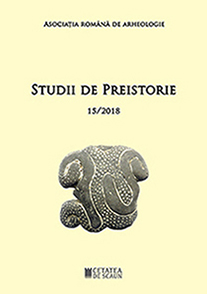Gospodărirea animalelor în așezarea Makó de bronz timpuriu de la Pecica-Site 14
Animal husbandry in the Makó bronze age settlement from Pecica-Sit 14
Author(s): Xenia Pop, I. Alexandru Gudea, Aurel DamianSubject(s): Archaeology
Published by: Editura Cetatea de Scaun
Keywords: archaeozoology; Makó culture; Early Bronze Age; Pecica-Site 14; animal exploatation
Summary/Abstract: The present study focuses on the archaeo faunal remains found in the Early Bronze Age site Pecica-Sit 14, belonging the Makó culture. The settlement was discovered in 2011 during the construction of the future slot of the Nădlac-Arad motorway. A number of 370 bone fragments (95 from the dwelling and 275 from the rubbish pit) were analysed, out of which 171 fragments were identified to genus level. The archaeozoological investigations showed that the animal exploitation was concentrated on the cattle and horse breeding, swine and the capriovids falling onto the second place as importance. The slaughtering age for the most of the individuals was done at subadult stage, but we also identified adult individuals. In addition of the main domestic species of economic interest, roe deer, aurochs, gastropods and bivalves remains were identified. The anatomical distribution of bones shows the prevalence of the fragments of the appendicular skeleton in case of large ruminants and equids, while for the other species the cranial and axial skeleton parts are almost equally represented. Traces of human processing have been identified on some of the fragments.
Journal: Studii de Preistorie
- Issue Year: 2018
- Issue No: 15
- Page Range: 127-141
- Page Count: 15
- Language: Romanian

